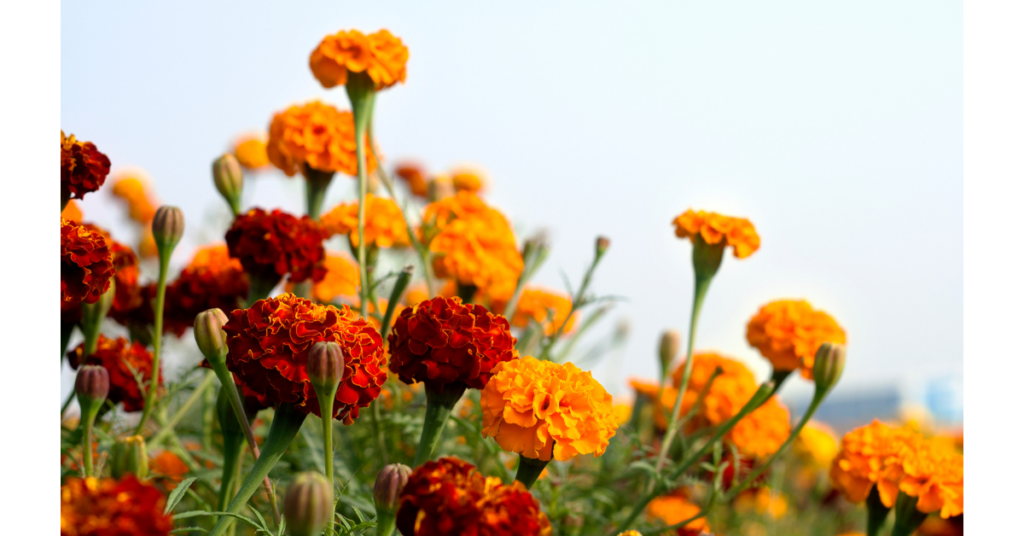Marigold (Calendula officinalis)
In olden days, it was common practice to substitute the very expensive crocus stigma (saffron) with marigold. Next time you enjoy a saffron dish, check to see if it has marigold petals instead!
Marigold is probably one of the most useful of all herbs. Its botanical name Calendulae comes from the Latin word ‘calends’, meaning ‘throughout the months’, alluding to its long flowering period. Officinalis denotes that it has been used medicinally for many years. Very occasionally you can get an absolute oil of marigold, but be sure not to confuse it with the African Marigold of the genus Tagetes, which is often used by Aromatherapists.
Marigold leaves can be used in salads. It produces a yellow dye.
Other names: Common marigold, pot marigold, Scotch marigold, Mary’s gold.
Description and the places it grows in
Native to the Mediterranean, marigold grows throughout the world. It is an annual plant with yellow orange double flowers. It flowers mid to late summer.
Parts used
Flowers and petals, which are collected in summer.
Uses
Cholagogue, styptic, anti-inflammatory, vulnerary, antiseptic, and antibacterial
Skin problems: Used in the treatment of inflamed skin due to the flavonoids, burns, scalds, stings, nappy rash, cracked skin, cracked nipples, cold sores, and impetigo. It is especially good for cracked nipples, used in the form of a poultice or compress. It is non-toxic to babies too, although they might not like the bitter taste. Look out for ointments that contain calendula.
Digestion: Taken internally, it encourages the flow of bile and helps the gallbladder.
Conjunctivitis: Used as a cold infusion; be sure to make the solution sterile.
Varicose veins and chilblains: Promotes healing.
Other uses: Thrush can be treated with marigold, due to its antifungal properties. It eases period pains and regulates the cycle, bringing on delayed menstruation.
Marigold is used in cooking and also for its yellow dye. It has a use in the cosmetics industry, and it is added to hair rinses and skin creams.
Constituents
Volatile oils, yellow resin, calendulin, saporins, bitter principle, carotenoids, mucilage, flavonoids.
Contraindications
None known.

